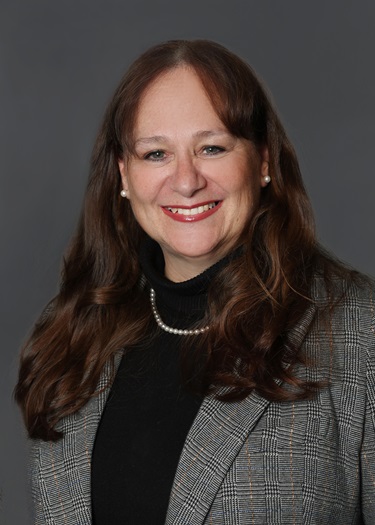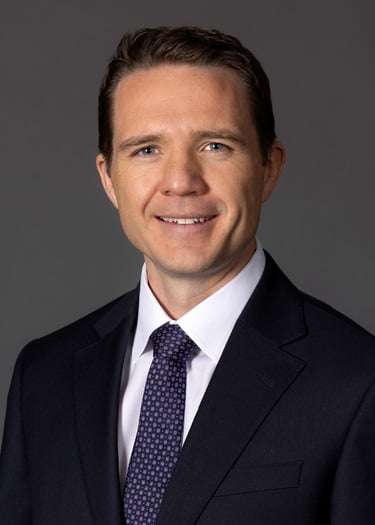Global Life Sciences Update
EU Court Upholds the Scope of Orphan Drug Designation

- The recent General Court judgment (Judgment) in Case T 549/19 Medac v European Commission confirms that only medicines authorized for an orphan condition will be considered to be existing “satisfactory methods” of treatment for the purposes of orphan designation.
- This confirms that sponsors of orphan medicines do not have to demonstrate that their product is of “significant benefit” in comparison with off-label or compounded products.
- In making its determination, the General Court reiterated the importance of the incentives available under the orphan legislation in order to stimulate the development of treatments for rare diseases.
- The General Court’s Judgment has helped to ensure that the protection afforded to orphan medicines is not circumvented by unauthorized products.
Regulation 141/2000 on orphan medicinal products (the Orphan Regulation) provides vital incentives to stimulate the development of treatments for rare diseases in the EU. Crucially, these incentives include the possibility of obtaining a 10-year period of market exclusivity (extendable up to 12 years for conducting pediatric studies in accordance with an agreed pediatric investigational plan), provided that the product meets the criteria for orphan designation. These criteria must be met at the initial orphan designation phase and at the marketing authorization phase. The orphan designation criteria include a requirement for the sponsor to demonstrate that no “satisfactory method” of diagnosis, prevention, or treatment of the condition in question exists. Alternatively, if such a method does exit, the sponsor must demonstrate that its product will be of ”significant benefit” to those affected by that condition, in comparison to existing satisfactory methods (Article 3(1)(b) of Regulation No 141/2000). Further guidance on the concept of “satisfactory method” and “significant benefit” is provided in the Commission Notice of 18 November 2016 (the Commission Notice).
Pursuant to the Orphan Regulation, Medac Gesellschaft für klinische Spezialpräparate mbH (Medac) obtained an orphan designation for its treosulfan-based product for “conditioning treatment prior to haematopoietic progenitor cell transplantation” in 2004. However, at the time of applying for marketing authorization and maintenance of the orphan designation in 2019, the Committee of Orphan Medicinal Products (COMP) concluded that Medac had not established that Trecondi-treosulfan would be of significant benefit in comparison to certain other satisfactory methods of treatment, namely melphalan- and cyclophosphamide-based medicinal products. Accordingly, in June 2019, the Commission adopted a decision granting Trecondi-treosulfan a marketing authorization, but on the basis of the COMP’s final opinion, the Commission withdrew its orphan designation (the Contested Decision).
Medac challenged the Contested Decision on a number of different grounds before the General Court, including a manifest error of law in the interpretation of the concept of satisfactory method; and, misuse of powers and failure to comply with the Commission Notice. Medac argued that the therapeutic indications and target patient populations specified in the summary of product characteristics (SmPCs) for melphalan- and cyclophosphamide-based medicines differed from that of Trecondi-treosulfan, and consequently, the COMP erred in issuing a negative opinion for orphan designation.
The General Court’s Judgment
At paragraph 52 of the judgment, the Court confirmed that a medicinal product has to be authorized and that authorization must be for the same orphan condition for it to be considered an existing “satisfactory method” of treatment:
…in order for a medicinal product to be classified as a “satisfactory method” within the meaning of Article 3(1)(b) of Regulation No 141/2000, it must be “authorised” in the European Union or in a Member State of the European Union for the same orphan “condition” as that covered by the medicinal product for which an MA as an orphan medicinal product is sought.
While this position should already be clear from the express wording of Article 3(1)(b) of the Orphan Regulation (which specifies treatments “authorised” in the EU), some doubt had been created by controversial elements of the Commission Notice that suggested that unauthorized medicines compounded in pharmacies pursuant to the “magistral formula” or the “officinal formula” may be considered to be a satisfactory method. However, the General Court’s judgment now confirms that only authorized medicines may be considered “satisfactory methods.”
Additionally, the Court expressly confirmed that, consistent with the Commission Notice, the off-label use of a medicinal product cannot constitute a satisfactory method as such treatment would fall outside of the scope of the SmPC which forms part of the marketing authorization. Indeed, the Court adopted a strict interpretation of the scope of SmPCs in light of the equally strict regulatory requirements to amend marketing authorisations and SmPCs.
When it came to determining whether melphalan- and cyclophosphamide-based medicinal products are authorized for treatment of the same orphan condition covered by Trecondi-treosulfan, the Court therefore took account of the scope of the marketing authorization of each medicinal product and, in particular, its therapeutic indication and its target population, as defined in their respective SmPCs.
While the Court acknowledged a partial overlap between the conditions and patient populations covered by the medicinal products in question, an analysis of the SmPCs showed that Trecondi-treosulfan and melphalan- and cyclophosphamide-based medicinal products had certain important differences. For example, only Trecondi-treosulfan was indicated for treatment of myelodysplastic syndrome, and Trecondi-treosulfan was authorized for broader paediatric populations.
In this regard, at paragraph 67, the Court noted that it would be contrary to the intended purpose of the Orphan Regulation to exclude a potential medicinal product from the benefits of orphan designation on the ground that a “satisfactory method” exists only for a portion of the orphan conditions:
…the exclusion of a potential medicinal product from the benefits provided for by Regulation No 141/2000 on the ground that “satisfactory methods” exist only for a portion of the rare conditions covered by it is contrary to the intended purpose.
Furthermore, the Court emphasized that the EU legislature attaches particular importance to the availability of medicinal products for pediatric use in the EU, and therefore the fact that the scope of Trecondi-treosulfan’s indication extended to additional pediatric populations was significant.
Accordingly, the Court held that, for the non-overlapping indications and populations, melphalan- and cyclophosphamide-based medicinal products could not be regarded as “satisfactory methods” and therefore Medac did not have to demonstrate significant benefit in comparison to these treatments. The Court consequently annulled Article 5 of the Contested Decision, which had withdrawn the orphan designation.
Comment
This is an important judgment to sponsors of orphan medicines. Recent case law has demonstrated some of the many challenges facing developers of medicines for rare diseases, including the risk that an orphan designation may be withdrawn at the time of marketing authorization if sponsors are unable to demonstrate that their product is of significant benefit in comparison with newly authorized satisfactory methods of treatment (BMS v Commission, Case T-329/16). There has also been concern that the Commission had stretched the concept of “satisfactory method” to potentially include medicines compounded by pharmacists, and, in cases such as the present, to existing treatments that only partially overlap with the orphan indications and patient populations.
However, the present case confirms that only authorized medicinal products have the potential to be considered to be “satisfactory methods,” and furthermore, such authorized products will be “satisfactory methods” only to the extent that their indications and patient populations overlap with the orphan indications in question. Note that in reaching its Judgment, the court emphasized that the purpose of the Orphan Regulation is precisely to provide incentives for the development of medicines for rare diseases, which would not otherwise be possible under normal market conditions: “[T]he purpose of [the Orphan Regulation] is precisely to provide incentives for the research, development and placing on the market of medicinal products intended to treat such conditions.”
This is not the first time that the General Court has defended the protection afforded to orphan medicines and prevented the potential circumvention of market exclusivity (for example Laboratoires CTRS v Commission, Case T‑452/14). This judgment therefore once again highlights the importance of the incentives available under the Orphan Regulation to enable the development of medicines for rare diseases and to address unmet patient need.
Attorney Advertising—Sidley Austin LLP is a global law firm. Our addresses and contact information can be found at www.sidley.com/en/locations/offices.
Sidley provides this information as a service to clients and other friends for educational purposes only. It should not be construed or relied on as legal advice or to create a lawyer-client relationship. Readers should not act upon this information without seeking advice from professional advisers. Sidley and Sidley Austin refer to Sidley Austin LLP and affiliated partnerships as explained at www.sidley.com/disclaimer.
© Sidley Austin LLP
Contacts
Offices
Capabilities
Suggested News & Insights
- Stay Up To DateSubscribe to Sidley Publications
- Follow Sidley on Social MediaSocial Media Directory

